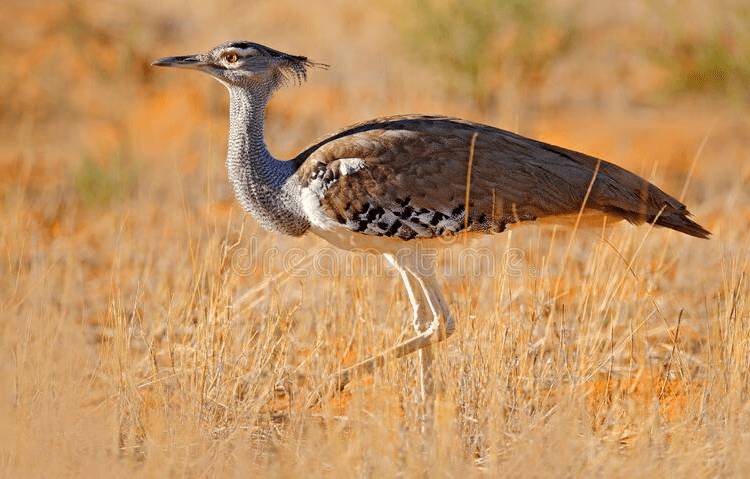Botswana, a landlocked country in southern Africa, is renowned for its stunning landscapes, diverse wildlife, and rich cultural heritage. Botswana National Bird, the bustard, is among the most iconic symbols of the country. In this article, we'll explore the fascinating world of Botswana's national bird, from its physical characteristics to its cultural significance.
The bustard is a large bird that belongs to the family Otididae, which includes around 26 species. The bird is characterized by its long legs, long neck, and large body, which can weigh up to 20kg. The bustard is a ground-dwelling bird that is mainly found in open grasslands, savannas, and scrublands.
Physical Characteristics of the Botswana National Bird
The bustard has a unique appearance that sets it apart from other birds. The bird's body is covered with brown, gray, and white feathers, which provide excellent camouflage in its natural habitat. The male bustard has a distinctive black breast and a large, inflatable white throat pouch, which it uses to attract females during the breeding season. The female bustard is smaller than the male and lacks the distinctive features of the male.
Distribution of the Bustard in Botswana
Botswana is home to the Kori bustard, the largest of all bustard species. The Kori bustard is found throughout the country, from the Kalahari Desert to the Okavango Delta. The bird is also found in neighboring countries such as Namibia, Zimbabwe, and South Africa.
Cultural Significance of the Botswana National Bird
The bustard is deeply embedded in Botswana's cultural heritage, with many traditional stories and folklore surrounding the bird. The bird is considered a symbol of strength, power, and resilience, and is often depicted in traditional art and craftwork. The bustard is also revered for its ability to survive in harsh environments, which is a trait that the Batswana people admire and emulate.
Threats to the Botswana National Bird
Despite its cultural significance, the bustard is facing several threats in Botswana. Habitat loss, poaching, and hunting are some of the major threats to the bird's survival. The bird's large size and conspicuous behavior make it an easy target for hunters, who kill the bird for its meat and feathers. The destruction of grasslands and savannas for agriculture and human settlement has also reduced the bird's habitat, making it more vulnerable to predators and other threats.
Conservation Efforts for the Botswana National Bird
Several conservation organizations and government agencies in Botswana are working to protect the bustard and its habitat. One such organization is the BirdLife Botswana, which is dedicated to promoting the conservation of birds and their habitats in the country. The organization conducts research, advocacy, and education programs to raise awareness about the importance of conserving the bustard and other birds.
Conclusion
The bustard is a remarkable bird that is not only a symbol of Botswana's cultural heritage but also a vital part of its ecosystem. The bird's conservation is crucial to maintaining the country's biodiversity and ecological balance. By working together, we can ensure that the bustard and other endangered species in Botswana are protected for generations to come.
FAQs
- What is the scientific name of the bustard?
The scientific name of the bustard is Otis kori.
- How long can the bustard live?
The bustard can live up to 20 years in the wild.
- Why is the bustard important to Botswana's cultural heritage?
The bustard is considered a symbol of strength, power, and resilience
- What are some conservation efforts to protect the bustard in Botswana?
Conservation organizations and government agencies are working to protect the bird and its habitat through research, advocacy, and education programs.
- What are some of the threats to the bustard's survival in Botswana?
Habitat loss, poaching, and hunting are some of the major threats to the bird's survival in Botswana.
